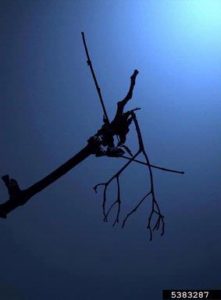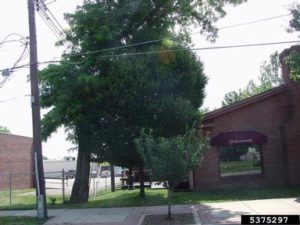Trees can be a stunning addition to any property, providing shade, beauty, and an abundance of benefits. However, as with all living things, they require proper maintenance to stay healthy and safe. One essential aspect of tree care is pruning. Regularly trimming your trees can help keep them healthy and safe, while also making them more attractive. But how do you know when it’s time to get out your pruners? In this post, we’ll explore six signs that indicate it’s time to trim your trees.
How often trees should normally be trimmed
Firstly, it’s important to note that not all trees need to be pruned on the same schedule. Younger trees may need more frequent trimming to shape them as they grow, while mature trees may require a lighter touch. In general, most trees benefit from a trimming every 3-5 years to remove dead or diseased branches and promote healthy growth.
According to our Certified Arborists, the general advice on how often you need to trim your trees, or when is a good time to trim your trees, can vary based on species, age, environmental factors, and aesthetic preference.

1. Broken Branches
Broken or limp tree branches are often caused by heavy snow or wind. They are hazardous, as they are at high risk of falling and injuring people or animals, and should be removed as soon as possible.
Since branches typically break during storms, it’s a good idea to give your tree a close inspection after a big storm and even have an arborist come out and evaluate the tree if you are unsure of its health.
2. Crossing Branches

Crossing branches can occur when a tree hasn’t been trimmed in a while. When branches cross they touch and rub against each other. This damages the exterior bark and exposes the interior of the branch. These wounds are targets for insects, diseases, and fungi.
Once infection or infestation begins in that branch it can spread to other parts of the tree causing decay. If you see crossing branches in your tree it’s important to get them trimmed out asap before too much damage occurs.
3. Deadwood

Stray branches of deadwood are common in trees but if you start to see large amounts of deadwood or clusters of deadwood it’s a sign your tree needs to be trimmed.
In summer, it can be easy to spot deadwood because these branches will not have any leaves or buds on them. In the winter or early spring, they can be harder to spot for many homeowners.
To identify deadwood when leaves aren’t on the tree, look for branches that are a different color or texture than the rest of the live branches. If you can reach the branches in question gently try bending them. Deadwood is brittle and will typically break when bent. As deadwood is a hazard, it needs to be removed as soon as possible.
4. Branch Density

Airflow in the canopy of a tree is essential to keep the tree healthy and prevent fungal diseases. If the tree’s canopy becomes too dense this airflow doesn’t occur and leaves will end up staying wet days after rain which can lead to fungal diseases.
In dense canopies, branches are also more likely to catch the wind and become hazardous during storms.
A good rule of thumb to see if your canopy is too dense is whether or not you can see through it when it’s fully leafed out in the summer. If you can’t see parts of the sky through your tree’s canopy it’s too dense.
5. Encroaching Branches

Trees have a mind of their own. They often have wandering branches that don’t respect the boundaries of our homes and electrical lines. Trees placed relatively close to homes at some point will have branches that start to encroach on power lines and surrounding structures.
These encroaching branches can easily take out power lines during storms and can damage shingles and siding. Fortunately, these branches can easily be trimmed back away from the structure/power line.
On top of pruning, a tree growth regulator can be used to slow the tree’s growth. This will help prevent the issue from happening again in the future.
6. Misshapen Tree

When not trimmed regularly, trees may grow in odd ways that can become dangerous. Whether it’s due to human or environmental factors, trees can become misshapen which causes an issue with weight distribution.
Incorrect weight distribution in a tree can lead to broken limbs and cracks in the trunk. This can lead to injury or property damage.
If your tree has begun growing in an odd direction or is starting to lean, it may need pruning to redistribute the tree’s weight.
Can I trim my own tree?
While trimming your trees can be tempting, it’s best left to the professionals. Improperly pruning your trees can lead to growth issues and weaken the overall tree. Trimming can also be dangerous, particularly if the tree is large or the trimming requires the use of a ladder.
When to bring in an expert
It’s always a good idea to bring in an expert, particularly if you are dealing with large trees or overgrown branches. Not only do they have the proper tools to safely and efficiently prune your trees, but also they can address any underlying issues that may cause problems down the line. It’s vital that trees are pruned correctly, at the proper angles, to ensure the tree is not damaged in the process.
Wondering when is a good time to trim trees? If you see any of these 6 signs then your tree needs help from its tree doctor. If it does, our certified arborists are here to help!


